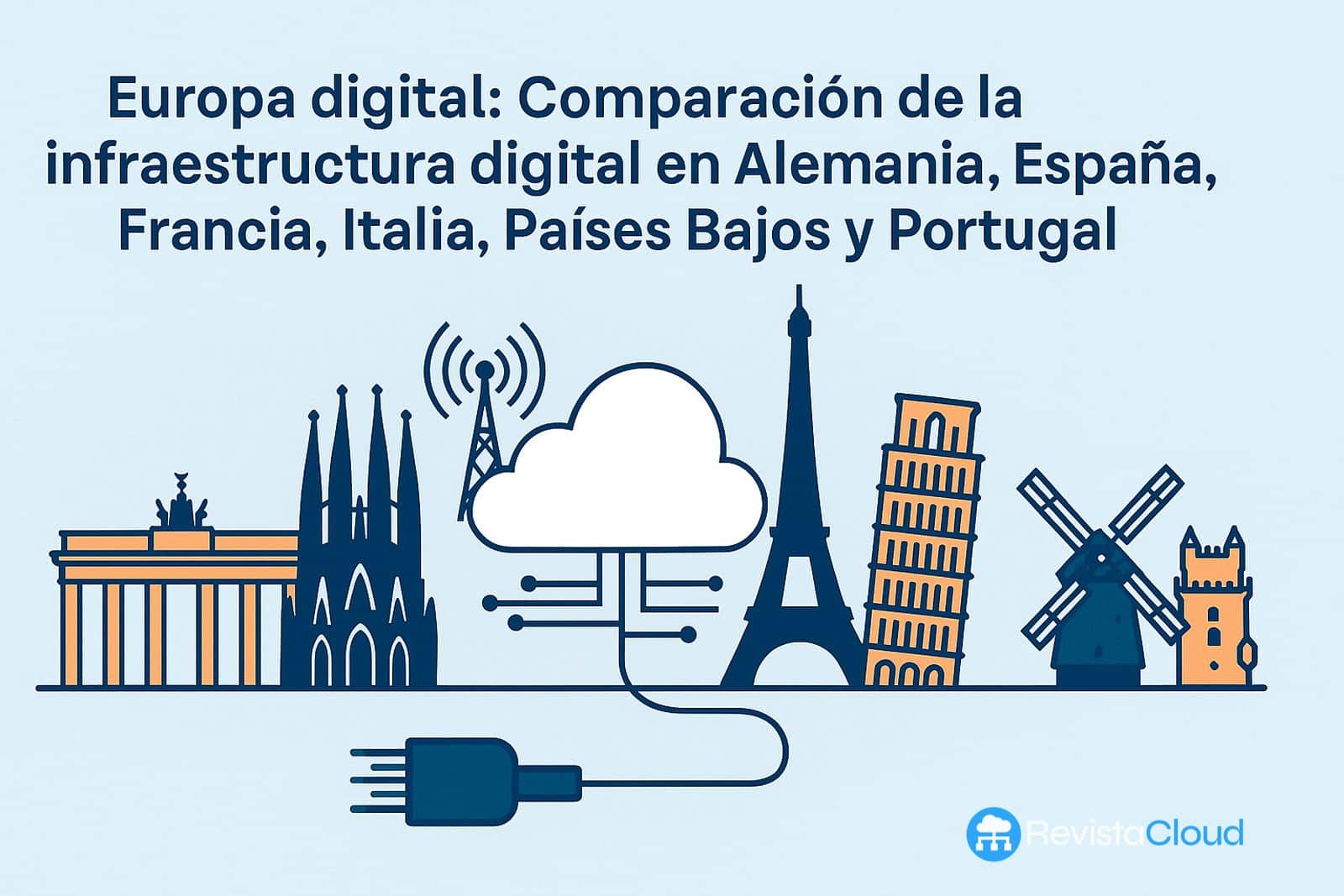Digital transformation is a priority on the European agenda. However, the pace and approach to this transformation varies significantly among member states. Below is an analysis of the current state of digital infrastructure in Germany, Spain, France, Italy, the Netherlands, and Portugal.
Connectivity and Fiber Optic Deployment
According to the “Telecoms Outlook 2024” report by ING, Spain and France shine with their advanced deployment of fiber optic networks, while Italy shows notable progress in 5G coverage. The Netherlands combines both advancements, positioning itself as a leader in connectivity. Germany, on the other hand, has intensified its efforts in fiber deployment, although it still has room for improvement compared to its neighbors.
Data Centers and Energy Demand
The European data center market has experienced nearly 20% year-on-year growth in the first quarter of 2024, with Paris leading with an increase of over 40%. However, energy availability remains a challenge in key markets like Frankfurt. This growth has led to an expansion into emerging markets such as Spain, Italy, and Portugal, where available space and lower costs attract significant investments.
Investments in Digital Infrastructure
Spain has secured major investments in digital infrastructure. Amazon announced a €15.7 billion investment to expand its services in the Aragón region, while Oracle plans to invest more than $1 billion in artificial intelligence and cloud computing in the country.
In Germany, Amazon has also committed to a €17.8 billion investment to expand its logistics network and cloud services, including the launch of the AWS European Sovereign Cloud project in Brandenburg.
Use of Recovery and Resilience Funds
The NextGenerationEU plan has been a key tool for driving digitalization in Europe. Spain has utilized these funds for labor and digital reforms, achieving 72% of its milestones. Italy, although it has secured €194.4 billion, has met only 65% of its targets, facing challenges in execution. France integrated the funds into its national “France Relance” plan, focusing on competitiveness and ecological transition. Germany allocated 56% of its funds to digitalization, although its tangible impact is still under analysis.
Digital Sovereignty and Regulations
Concerns over digital sovereignty have led companies like Google and Microsoft to strengthen their commitments in Europe. Google has expanded its “sovereign cloud” offerings in the EU, collaborating with local partners such as Thales in France and soon in Germany, to comply with data sovereignty regulations.
Conclusion
Digital infrastructure in Europe presents a diverse landscape, with countries like Spain and France leading in fiber connectivity, while Germany and the Netherlands advance in data center expansion. Significant investments and the strategic use of European funds are reshaping the continent’s digital map, though challenges in execution and policy coordination persist.

